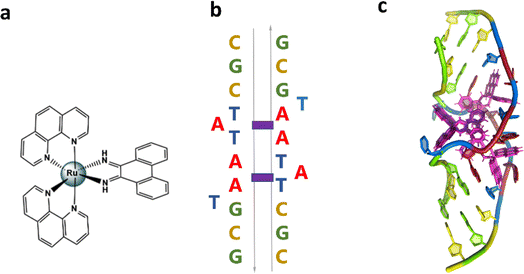 Open Access Article
Open Access ArticleCreative Commons Attribution 3.0 Unported Licence
Correction: Re-pairing DNA: binding of a ruthenium phi complex to a double mismatch
Tayler D.
Prieto Otoya
a,
Kane T.
McQuaid
a,
Neil G.
Paterson
b,
David J.
Cardin
a,
Andrew
Kellett
c and
Christine J.
Cardin
*a
aDepartment of Chemistry, University of Reading, Whiteknights, Reading, RG6 6AD, UK. E-mail: c.j.cardin@reading.ac.uk
bDiamond Light Source Ltd, Harwell Science and Innovation Campus, Didcot, Oxfordshire OX11 0DE, UK
cSSPC, The Science Foundation Ireland Research Centre for Pharmaceuticals, School of Chemical Sciences, Dublin City University, Glasnevin, Dublin 9, Ireland
First published on 6th September 2024
Abstract
Correction for ‘Re-pairing DNA: binding of a ruthenium phi complex to a double mismatch’ by Tayler D. Prieto Otoya et al., Chem. Sci., 2024, 15, 9096–9103, https://doi.org/10.1039/D4SC01448K.
The authors regret that in the published version of the paper, the letters in Fig. 2b have shifted upwards on the left-hand side. The correct version of Fig. 2, with its caption, is given herein.
The Royal Society of Chemistry apologises for these errors and any consequent inconvenience to authors and readers.
| This journal is © The Royal Society of Chemistry 2024 |

